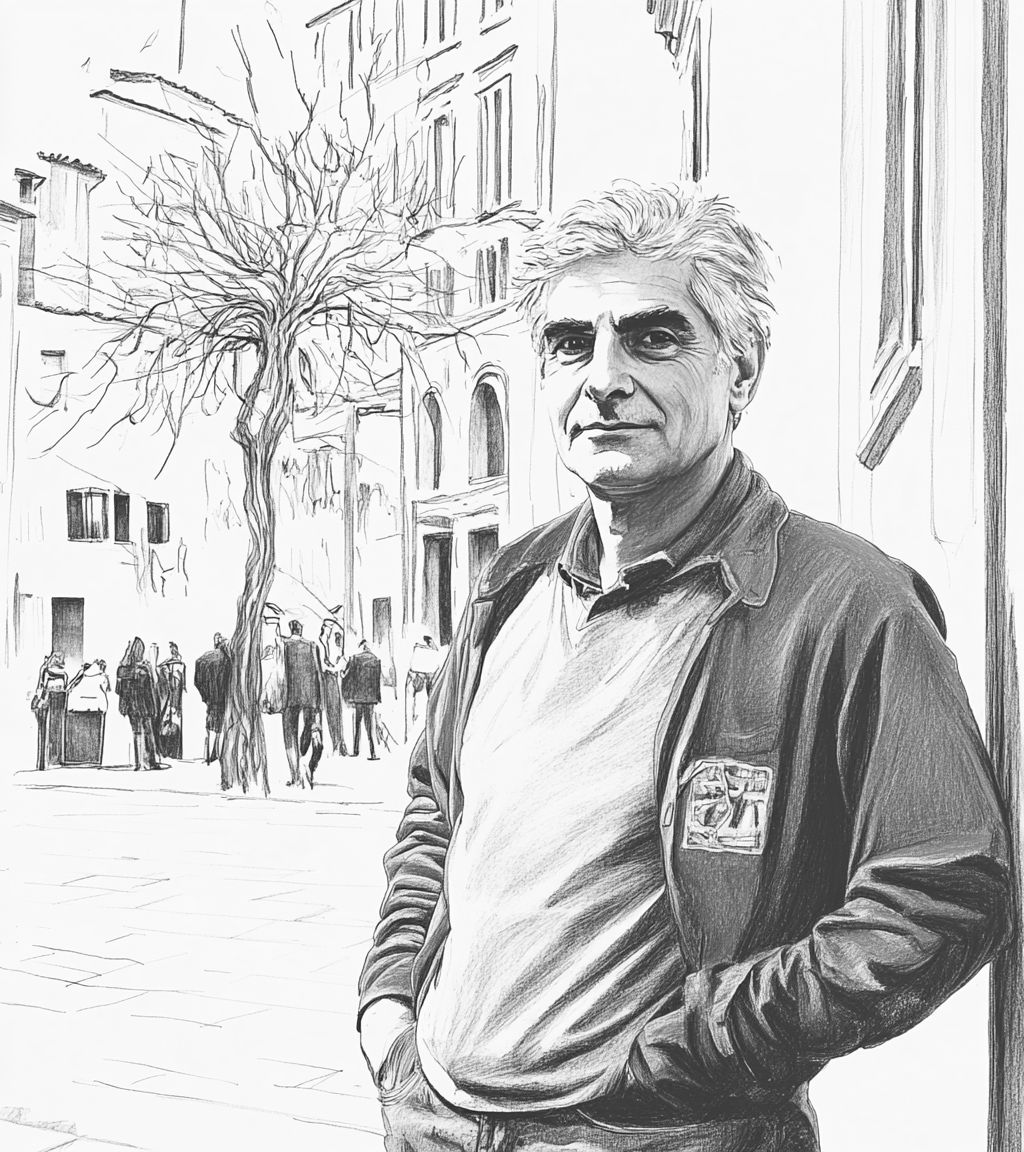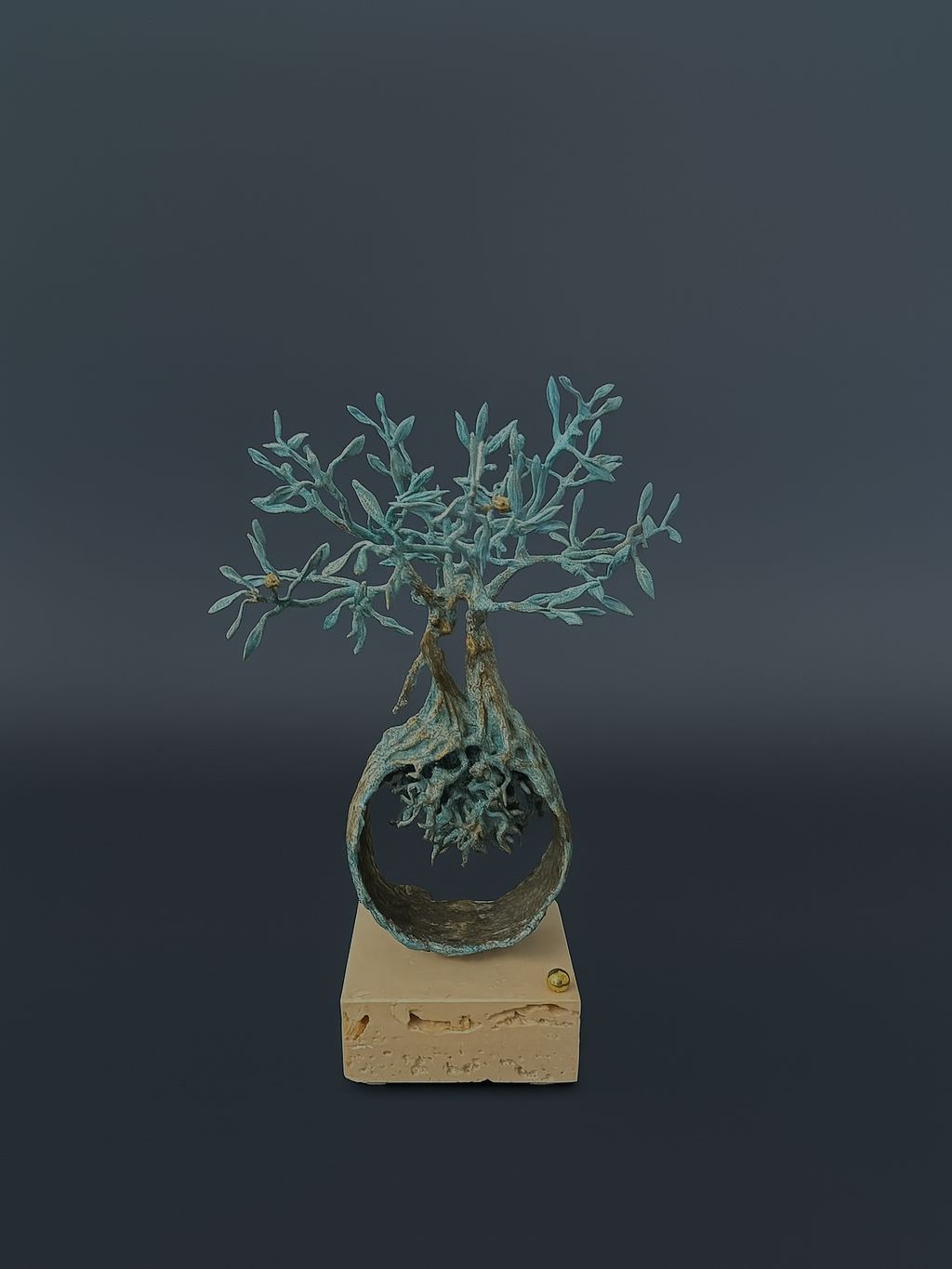
Andrea Roggi
Andrea Roggi, in his early years, was drawn to painting and poetry but ultimately chose sculpture as his main form of artistic expression. He briefly trained with Tuscan sculptor Enzo Scatragli before founding his own studio, La Scultura di Andrea Roggi, in 1991. There he developed his signature approach to bronze using the lost-wax casting technique. Since 2017, Roggi has also worked in marble, inspired by the natural forms and textures of Pietrasanta quarries.
Roggi’s artistic language blends the human form with natural elements — most notably in his recurring “Tree of Life” motif. His sculptures often depict figures that appear to grow out of or merge with trees, branches, and roots, representing ideas of unity, vitality, and memory. Using traditional and proprietary casting methods, he creates highly detailed bronze works that combine technical precision with poetic energy. Many of his sculptures seem to defy gravity, with swirling forms and suspended movement evoking timelessness and transformation.
Among Roggi has exhibited in major international art venues, including the Grand Palais (Paris), Olympia Grand Hall (London), Ahoy (Rotterdam), Grimaldi Forum (Monaco), and Fukuoka City Museum (Japan). Recent exhibitions include Humanitas – The Power of Love, held at the Basilica of San Lorenzo in Florence (2025), and Élan Vital, a large-scale public art route along Faubourg Saint-Honoré in Paris.
Collected by major institutions and notable private collectors:
— Ravagnan Gallery VeniceNotable sales and auction records:
— Untitled, EUR 3 thousand at Capitolium Art, 2025— Estasi, EUR 0,6 thousand at Studio d'Arte Borromeo, 2025
Artworks and Paintings
Biography and Artistic Career Highlights
Andrea Roggi was born on July 2, 1962, in Castiglion Fiorentino, Tuscany, Italy. His childhood unfolded in the Val di Chiana countryside, surrounded by nature and the region’s history, which shaped his artistic perception and deep attachment to the themes of land and roots. From an early age, he was interested in painting, poetry, and sculpture, gradually building his own creative path.
1981 — graduated from the Technical Institute in Arezzo. In the same year, he presented his first public work, “Alla Libertà,” in Trequanda.
1982 — spent some time working in the studio of artist Enzo Scatragli, where he mastered the technique of bronze lost-wax casting (cire perdue).
Late 1980s — began experimenting with painting and sculpture, creating his first works in terracotta, plaster, and stone.
1991 — founded his own workshop, La Scultura di Andrea Roggi, focusing on bronze. Thanks to his knowledge of chemistry and metallurgy, he developed personal techniques for working with the material.
1990s — developed a recognizable style centered on the theme of the “Circle of Life.” This period saw the creation of his first large-scale works dedicated to the harmony between humanity and nature.
2000s — actively exhibited and created monumental bronze sculptures in towns across Tuscany and Umbria. Among his significant projects were “Solidarietà,” “Toscana,” and “Campana dell’amicizia.”
2004–2005 — established the “Park of Creativity” (Parco della Creatività) near his workshop, organizing educational initiatives and masterclasses for students and young artists.
2010s — expanded his international presence. Opened The Circle of Life galleries in Cortona, later in Pietrasanta and San Gimignano. Developed his own “dynamic casting” technique, which allowed for more expressive sculptural forms.
2015–2018 — participated in major exhibitions in Europe, creating large-scale sculptures for public spaces.
2020–2023 — launched the exhibition series “Terra Mater | Earth and Heaven” in Italy, installed the “Albero della Pace” sculpture in Florence, and took part in shows in Venice, Vicenza, and Matera.
Today, Andrea Roggi continues to live and work in Tuscany. His art, in which bronze and marble are combined with philosophical images of nature and eternity, holds a strong position in contemporary international art. His sculptures adorn squares, parks, and museums throughout Italy and beyond, and his name is associated with the search for harmony between humankind, the earth, and the heavens.

